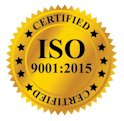Level 1: Corrosion theory and corrosion rate calculation
Objectives
- Define corrosion and recognize the economic, environmental and safety impact of corrosion - Recognize terms and definitions of basic electrochemistry, as well as define the processes and concepts of electrochemistry, oxidation and reduction reactions, thermodynamics, kinetics, and passivity - Identify the characteristics of MODULE DESCRIPTION Department: Date : 15/09/2020 N° version : 01 Page 4/6 commonly-encountered corrosive environments such as atmospheric, water and other electrolytes, soil and high temperature environments - Discuss the various forms of corrosion, how to recognize each form, materials subject to each form, environments that promote each form and how to control each form - Explain how corrosion can be controlled during the design process through construction, as well as process parameters, drainage, dissimilar metals, crevices, and corrosion allowance - Give examples as to how and when to use the control corrosion methods of design, material selection, modification of environment, protective coatings, and cathodic and anodic protection - Be able to calculate the corrosion rate. - Interpret code and standards requirements
————————————————————————-
Content
1- Corrosion impact
2- The corrosion cell: Driving force for corrosion: Voltage –Metal - Electromotive/galvanic series - Nernst equation - Temperature differences - Effects of alloying - Metal fabrication. / Electrolyte: Concentration cells - Types of concentration cells (Oxygen concentration cell - Metal ion concentration cell) - Effects of pH
3- Corrosion rate: Faraday’s law -Voltage difference - Reference electrodes (half-cells): Standard hydrogen electrode - Copper-copper sulfate electrode - Other reference electrodes (Silver-silver chloride reference electrode - Calomel reference electrode - Zinc reference electrode - Manganese dioxide - Graphite electrode) – Polarity - Converting between reference electrode values - Portable vs. Stationary electrodes – Polarization: IR drop - Factors affecting polarization (Current (charge transfer) - Electrolyte resistivity (total ion concentration) - Anode/cathode ratio – Temperature- Electrolyte/electrode movement effect - Electrolyte concentration effect
4- Forms of corrosion: Uniform attack - Crevice corrosion - Galvanic attack - Pitting - Intergranular attack- Selective leaching - Velocity phenomena - Environmental cracking: Corrosion fatigue - Hydrogen embrittlement - Stress corrosion cracking (SCC) - Microbiologically influenced corrosion (MIC)

